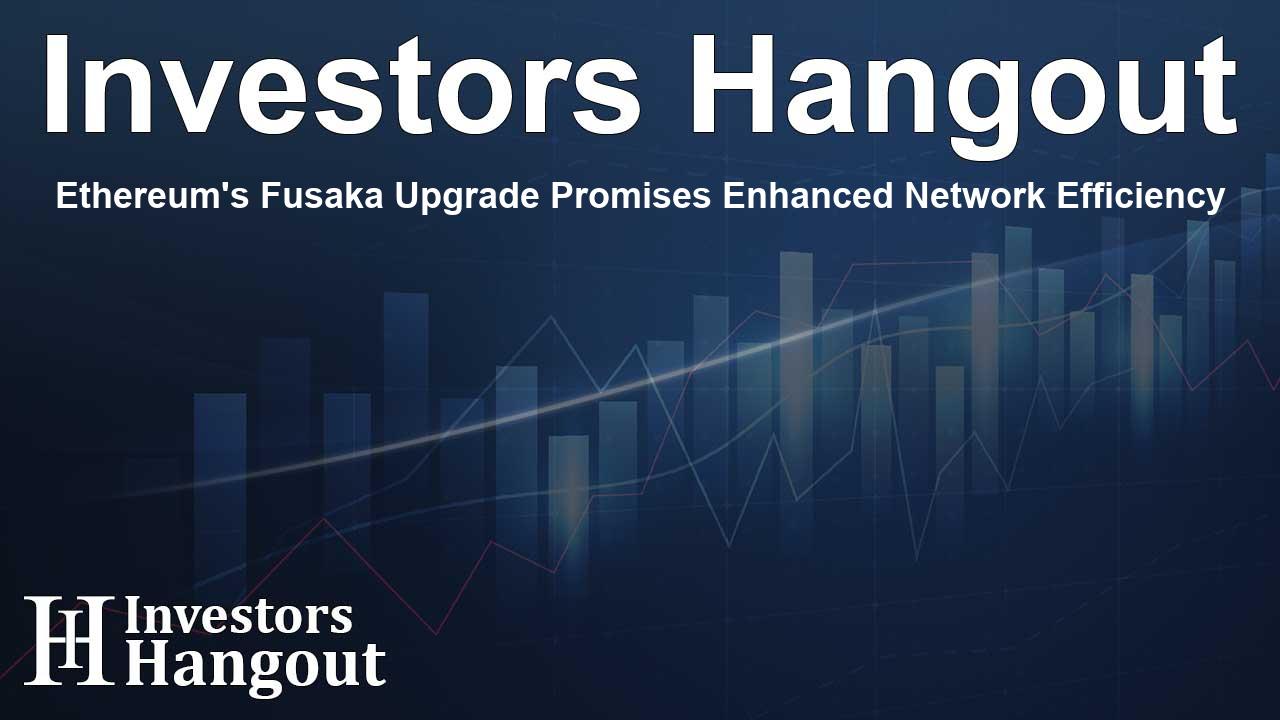Ethereum's Fusaka Upgrade Promises Enhanced Network Efficiency

Ethereum's Transformation and What Fusaka Means
Ethereum is currently experiencing a tremendous rally, which is significant for its development team as they are working on an update known as Fusaka. This network overhaul is designed to refine the blockchain's execution engine, leading to improved throughput and flexibility for applications.
Fusaka started as a collection of ambitious ideas, evolving into a comprehensive suite of enhancements aimed at increasing Ethereum's efficiency. Key changes include a rise in gas fees, limitations on the number of data blobs processed in each transaction, and innovative methods to fuse decentralized finance with traditional online commerce.
The culmination of these efforts signifies a drive toward a faster, more efficient network that facilitates better integration of off-chain solutions with Ethereum's ecosystem.
Incremental Changes Leading to Major Improvements
At the year's beginning, Fusaka appeared as a disjointed array of proposals. The Ethereum Improvement Proposals (EIPs) were focused on raising gas limits, rectifying blob fees, and addressing queries surrounding the size of smart contracts.
Instead of initiating numerous new features, the Ethereum Foundation has chosen a path of gradual tweaks, though these updates are significant when considered collectively.
Here are some of the standout enhancements connected to the Fusaka upgrade:
Expanded Transaction Capacity
One of the more significant changes in Fusaka is the increase in the upper gas limit to 45 million units, which enhances block transaction capacity. This upper limit is essential as it influences how much computational power each transaction can utilize within a block.
These limits are crucial for managing network traffic and avoiding bottlenecks caused by overly complex operations within each block. If implemented, this upgrade could potentially amplify Ethereum's transaction capacity by approximately 11%. Observations and benchmarks are necessary to ensure that block propagation remains resilient across varying latencies. Developers from the Ethereum Foundation have noted overall satisfaction with this proposed increase in the gas fee limit.
Managing Blob Usage
The Ethereum team is also focusing on blob data management. The addition of data blobs enabled affordable off-chain data availability last year, but it did not set boundaries on the amount of blobs allowed per transaction. Fusaka's EIP-7892 addresses this by capping blob utilization on a per-transaction basis to avert any single dApp from monopolizing blob availability.
Additionally, EIP-7918 establishes caps on the total number of blobs per block and introduces a minimum base fee to maintain a balance between scalability and network security. This structure ensures that block space is optimized and utilized efficiently, particularly during times of low activity.
Introducing the CLZ Opcode
Another under-the-radar enhancement associated with Devnet-2 is EIP-7939, introducing the count leading zeros (CLZ) opcode to the Ethereum Virtual Machine (EVM). This opcode assists developers in more efficiently calculating the quantity of consecutive leading zero bits in binary numbers, which is essential for operations involving cryptography and data compression.
The existing EVM lacks a dedicated CLZ opcode, forcing developers to implement this operation with a series of more complex steps, making it less efficient.
Moreover, EIP-7951 aims to create direct on-chain connections with mobile devices and enterprise platforms, facilitated through standard Web2 security measures, moving Ethereum towards smoother off-chain service integration.
Community Sentiment and Feedback
The concentrated focus of the Fusaka upgrade has met with some skepticism from the Ethereum community. In a recent social media post that garnered substantial attention, a notable figure in the Ethereum ecosystem voiced concerns regarding postponed fixes for long-standing issues, particularly the notorious "stack too deep" error and the 24 KB limit on smart contract bytecode size.
This commentary sparked extensive discussions among stakeholders, with some developers indicating that while improvements like accommodating the EVM object format (EOF) are necessary, they may now be relegated to subsequent upgrade cycles.
Critics have argued that the current scope of EOF is overly complex, potentially burdening the Ethereum network with unnecessary intricacies while compromising crucial performance factors.
Key Takeaways about Fusaka
Despite the community's mixed feelings and the lack of prominent headline features, Fusaka is poised to represent a pivotal advancement in optimizing Ethereum's network performance. This upgrade emphasizes targeted improvements over dramatic changes, ensuring smooth functionality for all users.
Following the completion of the previous Pectra upgrade, Fusaka aims to fortify Ethereum’s operational efficiency and progressively align the network more closely with contemporary web services.
This careful approach to enhancing performance minimizes risks and maintains user confidence, marking a significant progression in Ethereum's ongoing evolution.
Frequently Asked Questions
What is the Fusaka upgrade?
Fusaka is an upcoming Ethereum upgrade designed to enhance the blockchain's execution engine, improving transaction throughput and flexibility.
How does Fusaka increase transaction capacity?
Fusaka raises the gas fee limit to 45 million units, thus allowing a higher transaction capacity per block, potentially improving overall network efficiency.
What are data blobs?
Data blobs are segments of off-chain data incorporated into Ethereum transactions, which the Fusaka upgrade intends to manage more effectively by capping their usage.
What has the community’s response been?
While many support the Fusaka upgrades, some community members express concerns about delayed fixes for existing issues and potential over-complexity in future upgrades.
How does Fusaka relate to previous upgrades?
Fusaka builds upon improvements made in preceding upgrades, aiming to ensure network stability while increasing overall efficiency without major disruptions.
About The Author
Contact Lucas Young privately here. Or send an email with ATTN: Lucas Young as the subject to contact@investorshangout.com.
About Investors Hangout
Investors Hangout is a leading online stock forum for financial discussion and learning, offering a wide range of free tools and resources. It draws in traders of all levels, who exchange market knowledge, investigate trading tactics, and keep an eye on industry developments in real time. Featuring financial articles, stock message boards, quotes, charts, company profiles, and live news updates. Through cooperative learning and a wealth of informational resources, it helps users from novices creating their first portfolios to experts honing their techniques. Join Investors Hangout today: https://investorshangout.com/
The content of this article is based on factual, publicly available information and does not represent legal, financial, or investment advice. Investors Hangout does not offer financial advice, and the author is not a licensed financial advisor. Consult a qualified advisor before making any financial or investment decisions based on this article. This article should not be considered advice to purchase, sell, or hold any securities or other investments. If any of the material provided here is inaccurate, please contact us for corrections.
